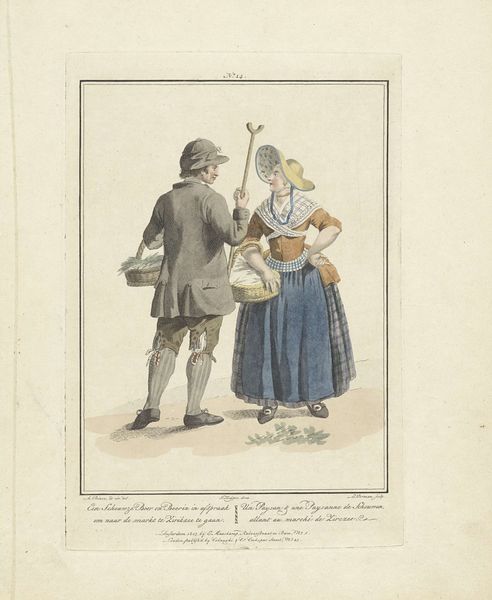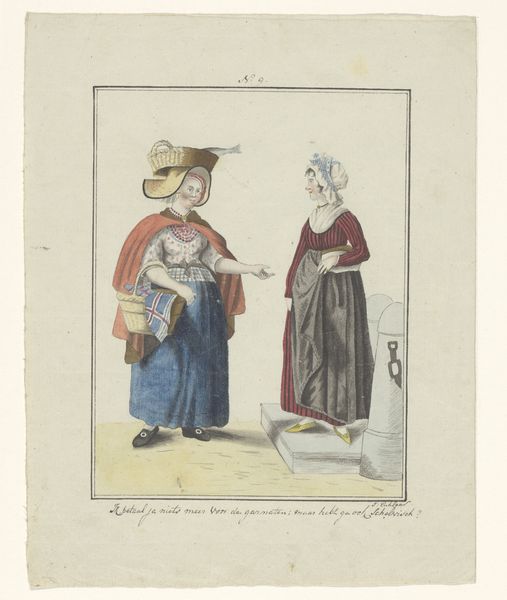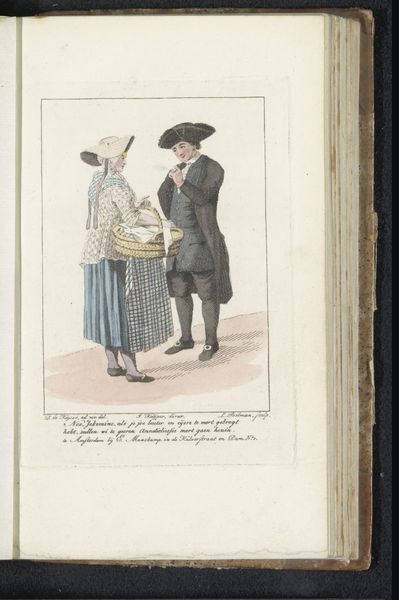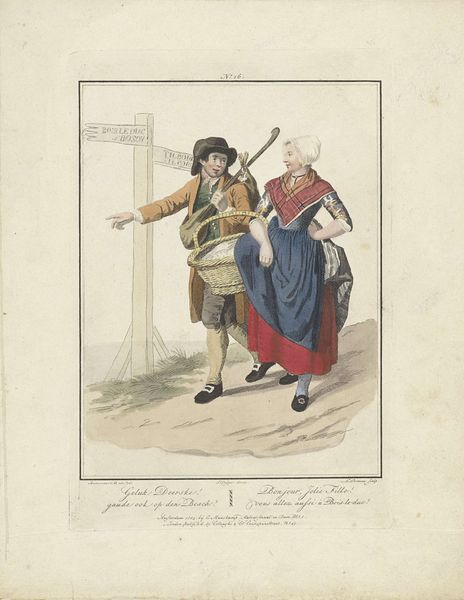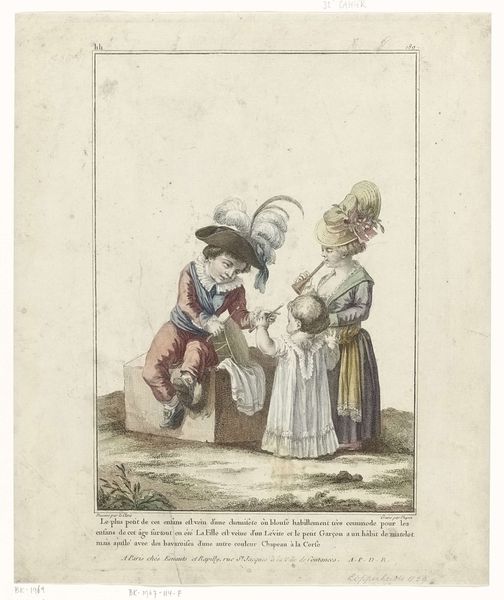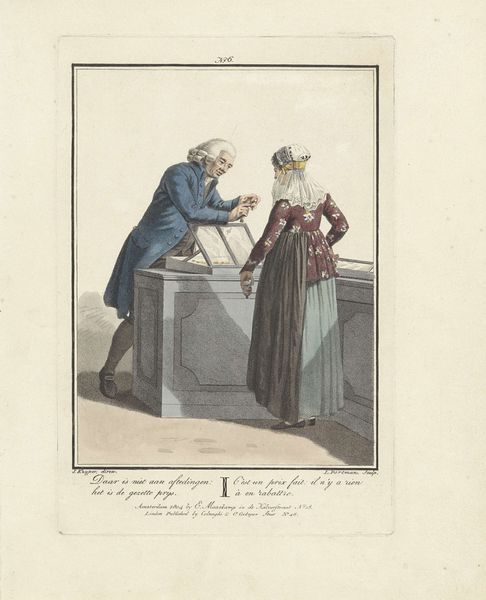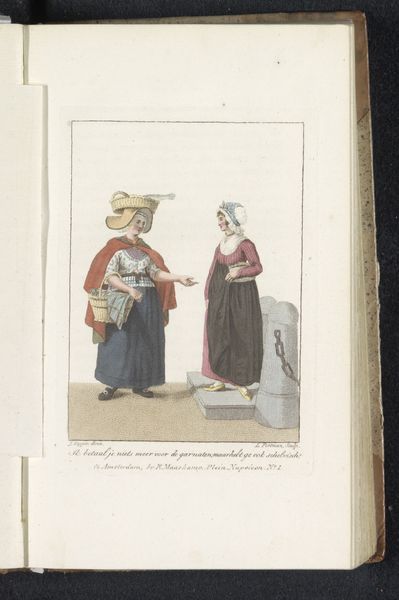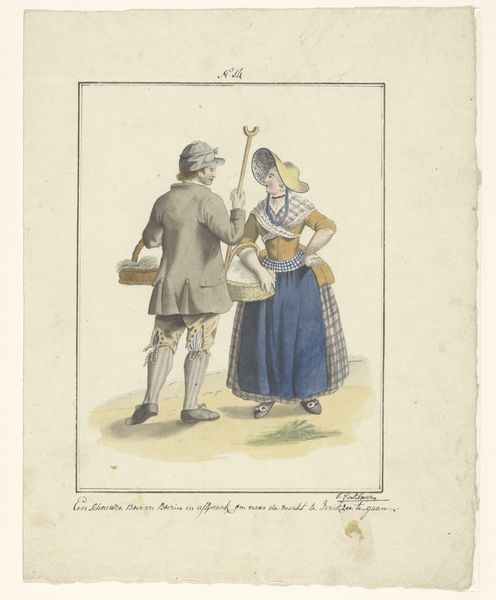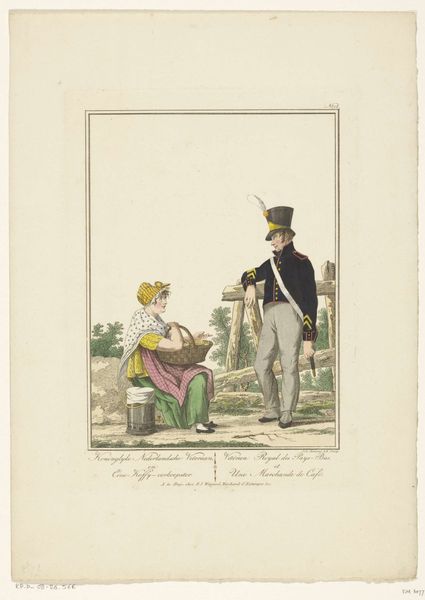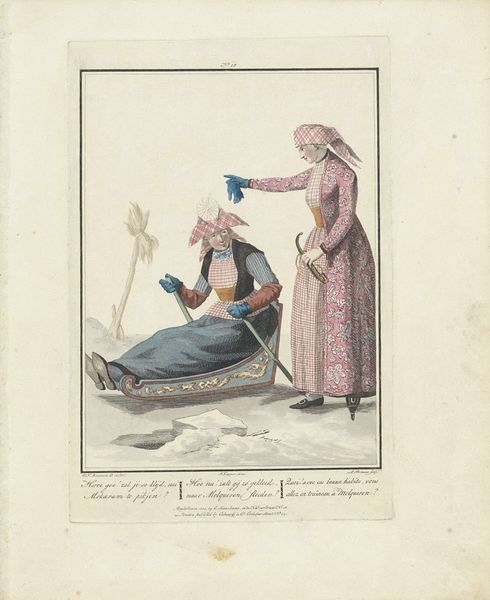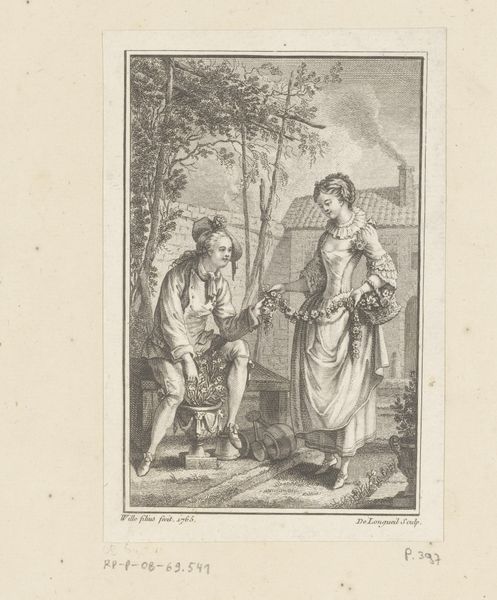
print, watercolor
#
portrait
#
narrative-art
# print
#
figuration
#
watercolor
#
romanticism
#
watercolour illustration
#
genre-painting
#
watercolor
Dimensions: height 163 mm, width 112 mm
Copyright: Rijks Museum: Open Domain
Editor: So, this is "Europe, République, L'An 1806: Homme et Femme de la Hollande," created by Lachaussée in 1806. It's a print, and looks like it has watercolor applied as well. The composition is pretty simple, focusing on a man and woman in what I assume is traditional Dutch clothing. It strikes me as quaint, almost staged. What do you see in this piece that I might be missing? Curator: Staged is a good word! Think of this less as a slice of life and more as a fashion plate. Notice how much detail is lavished on their costumes compared to, say, the rather rudimentary suggestion of a seascape behind the gentleman. I see it as an artifact of a particular moment— the Romantic era’s fascination with the ‘picturesque’ quality of different cultures, rendered digestible for a European audience. Does that resonate? Editor: It does, actually! I was focusing so much on the "dailiness" of it, that I overlooked the "Europe" title giving me the context needed. Are they posed to show how traditional people act, while dressed up? Curator: Precisely! The ‘dailiness’ you sensed is itself a constructed ideal, isn’t it? Look closely— his pipe, her spindle. These are presented almost like props in a theatrical performance. How do their expressions strike you? Editor: Kind of blank, like they’re trying not to fidget during a very long photoshoot or sitting. It definitely enforces your "props" assertion. They’re showcasing attire over action! Curator: Exactly. It’s about visually cataloging "Holland" for the armchair traveler. Next time you look at such works, think about who they were *really* for. Editor: That's a great point, really changes the whole way you perceive something like this. Now I'm eager to spot this performative aspect in other artworks. Curator: Agreed, recognizing that subtle shift unlocks so much more about these curated scenes, for me, as well!
Comments
No comments
Be the first to comment and join the conversation on the ultimate creative platform.

